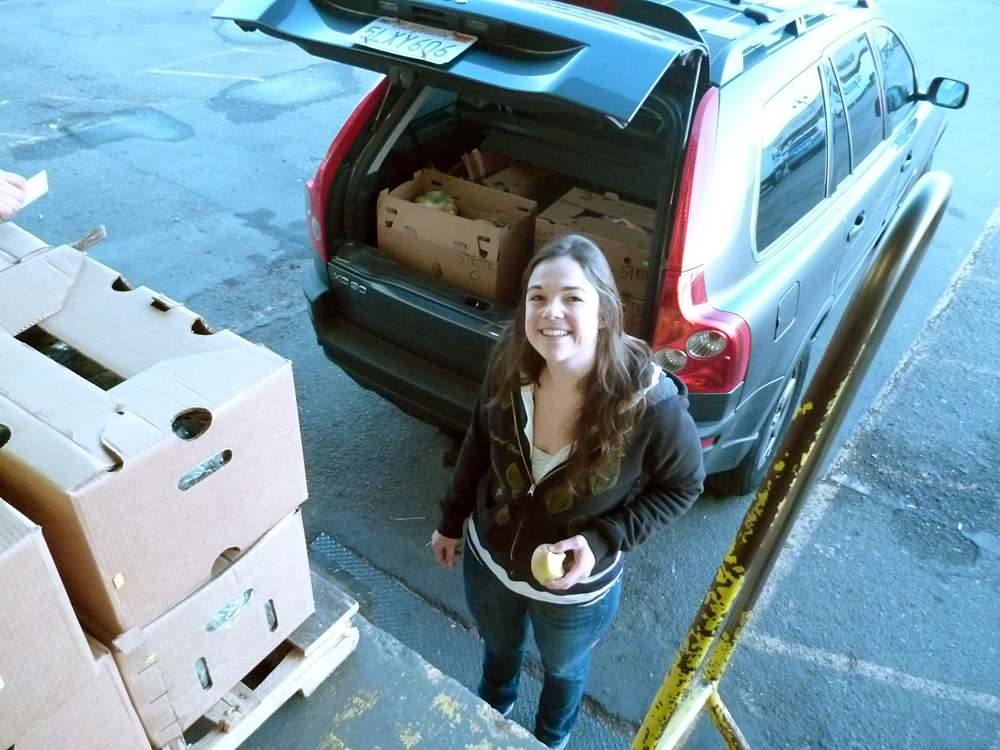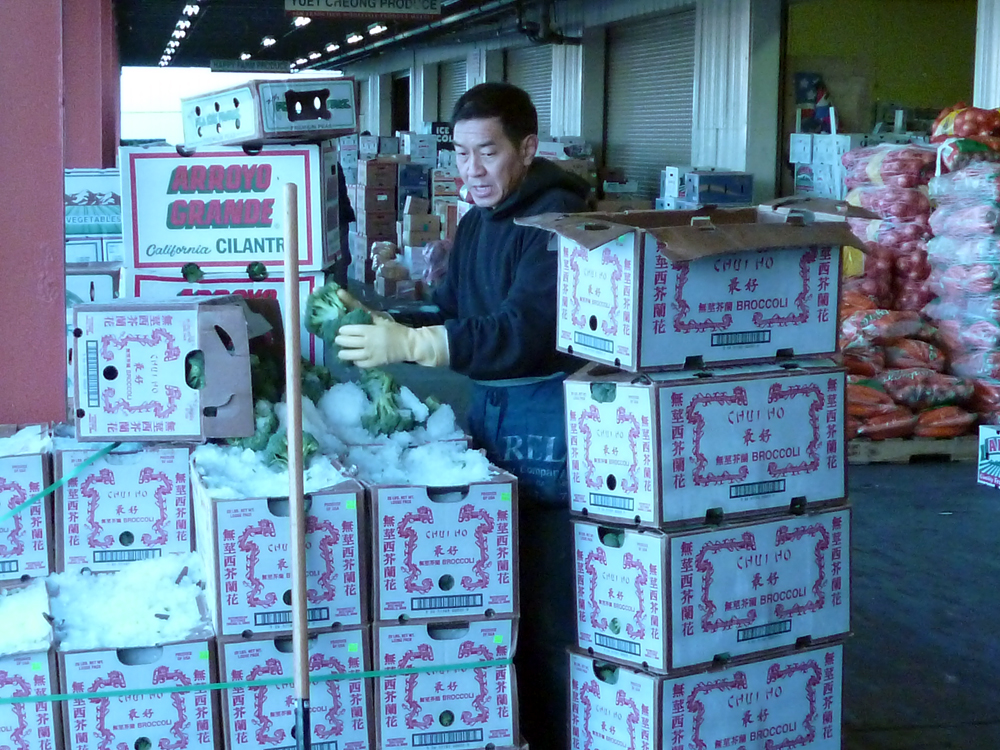Mexican asparagus, young coconuts from Thailand, stiffly frilled kale and fuschia-stemmed chard grown in Winters or Watsonville, edible purple pansies babied in a backyard in Oakland: Do you ever think about how they get to the shelves of Mollie Stone’s, onto your $11 salad in the Marina, or your $18 pizza in the Mission?
The answer is down on this chilly, pre-dawn corner of Jerrold Avenue, where the moon, fat and round as a pomelo, is sinking behind the hodgepodge cluster of warehouses, coolers, and trucking bays that make up the San Francisco Wholesale Produce Market, stretched over old streetcar tracks, crisscrossing worn brick-lined streets in one of the city’s last rumbling, remaining districts of light industry.
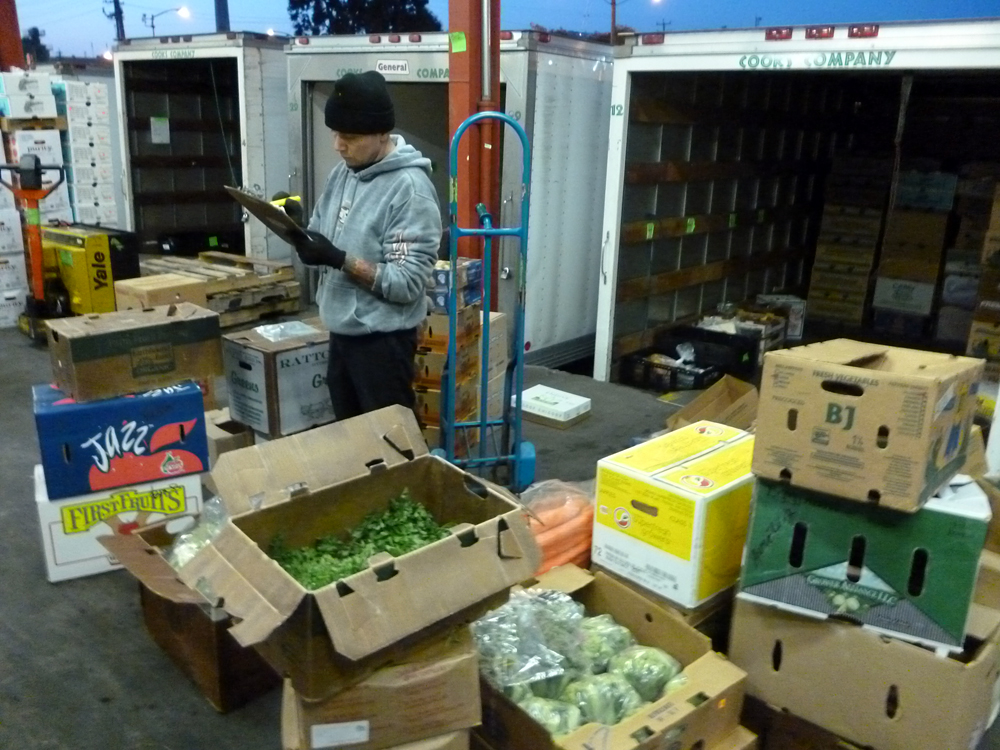
While you were sleeping or dancing, drinking or downloading, buyers from Bi-Rite, Canyon Market, Good Life, Berkeley Bowl, Rainbow Grocery and hundreds of corner groceries and fresh produce stores all around the city spent the night's darkest hours in close communion with the food you’ll be eating today, judging and bargaining to get the best stuff at the cheapest price.
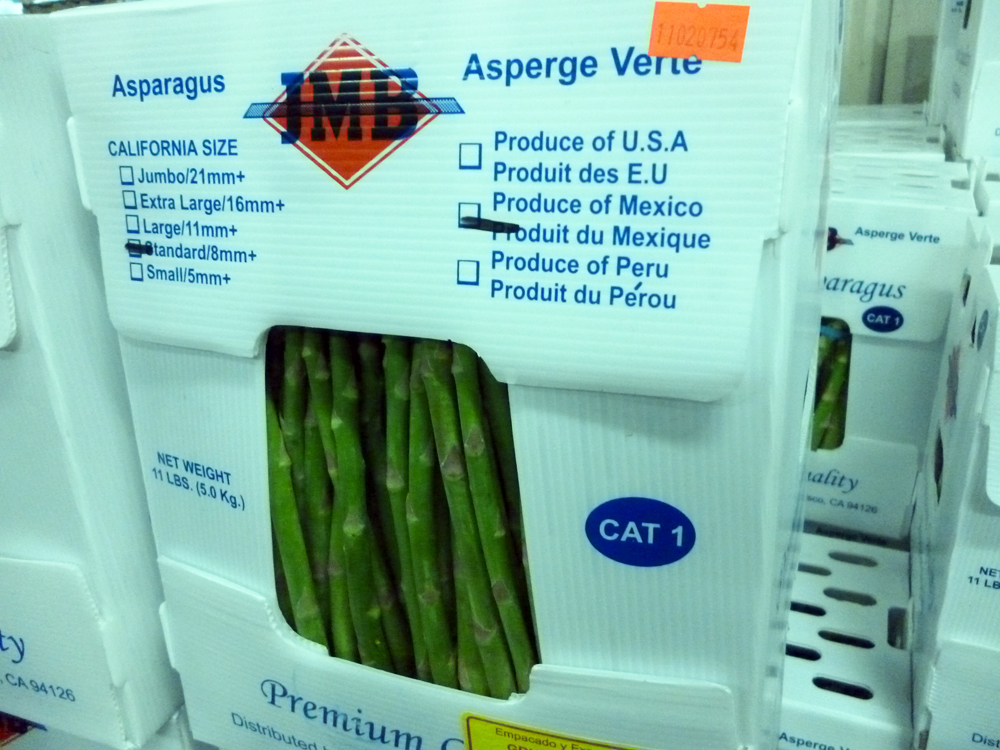
It’s a working market that’s been part of the city’s fabric since the early 1960s, when the old downtown produce market was razed to make room for what’s now the Embarcadero complex. Working with the city, the vendors and merchants built a new market near where Bernal Heights flattened out past Bayshore, north of Silver Terrace not far from Bayview. Stretched over 20 acres, it provides over 650 jobs, fills more than 300,000 square feet of warehouse space and moves millions of dollars of food from growers to distributors to buyers annually.
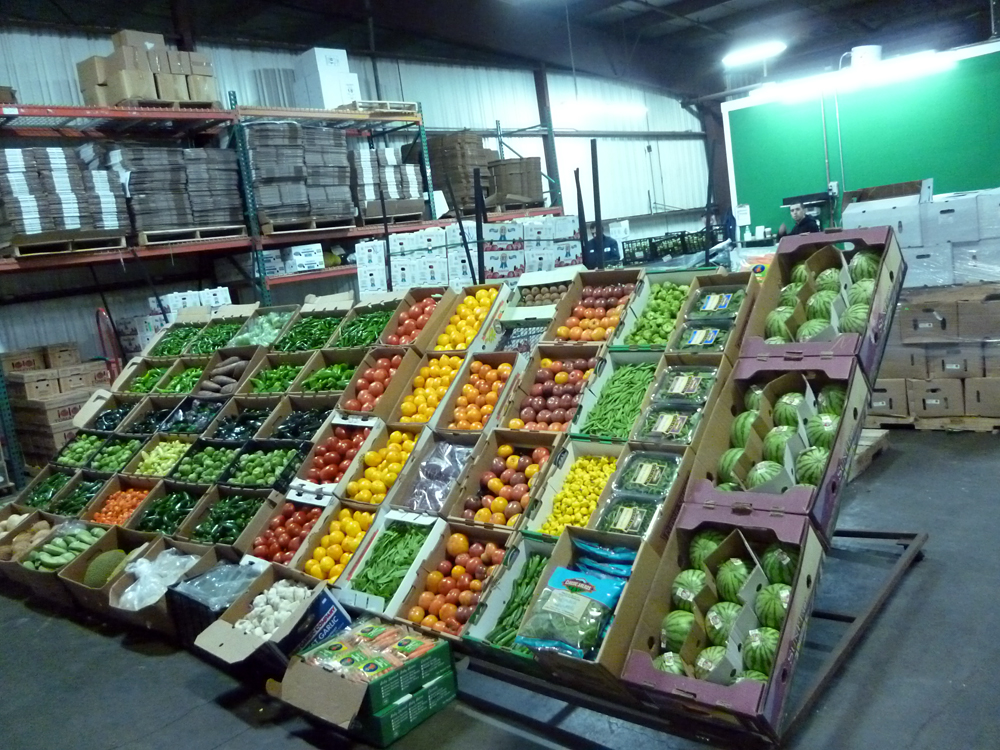
And yet, few San Franciscans know of it. In its full swing at 2 or 3 in the morning, busy as a trading floor, the market exists to move product, this colorful money stacked up in the shape of snow peas and eggplants, radishes and apples. The daunting maze of trucks and loading bays is no place for sleepy civilians: Stand still for a moment, anywhere, and you’re bound to be in several someones’ way as they barrel past you, pushing a hand cart or maneuvering a forklift stacked high with boxes, filled with oversized red peppers from Mexico, big and shiny as shoes, or bristling bunches of parsley, dozens to a case.
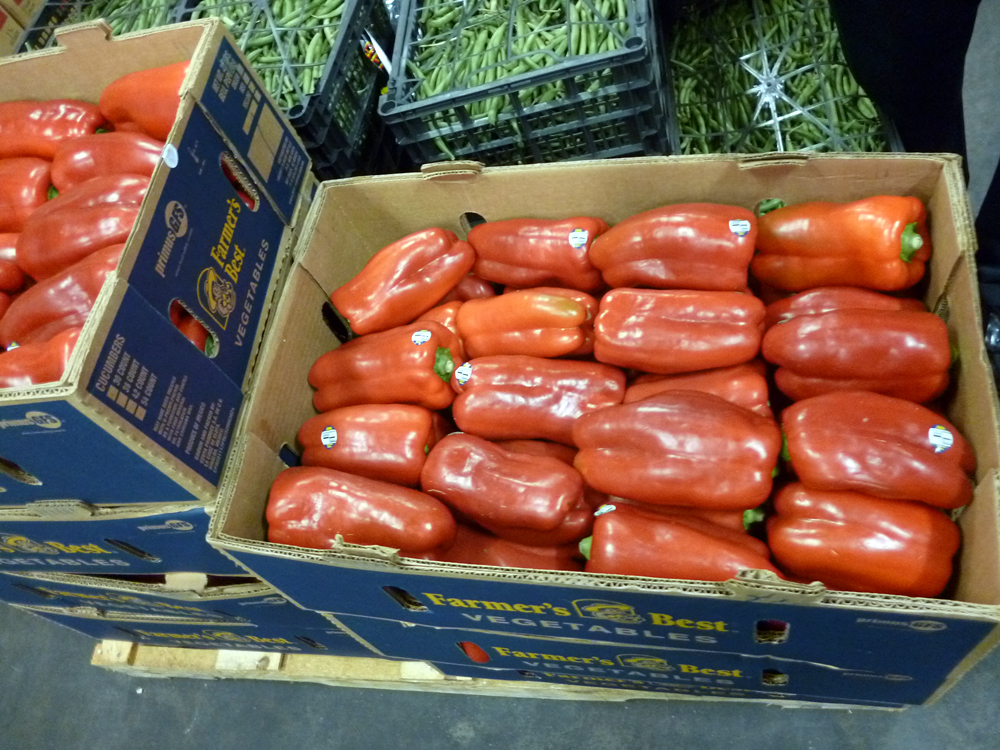
If you have to be there, stay close to the sides of general manager Michael Janis and his colleague, business development representative Eddie Kapper. Genial, dedicated, fast-moving men, they slide through the market as if strolling through their offices, greeting workers by name, shaking hands with buyers. The market is made up of more than two dozen independent businesses, each with its own specialty, many still family run. There’s Washington Vegetable, carrying a full line of vegetables but specializing in greens. Earl’s Organic Produce, in business since the 1970s, sells only organic produce from its spacious new warehouse, where the coolers are adjusted to the optimal needs of the produce: one cold and moist, another cold and dry. (Bananas long for one climate, Meyer lemons another.) Whole Foods has its own huge warehouse here, which it has since outgrown; it’s moving to a new, dedicated distribution facility in Richmond soon. Some businesses, like Yuet Cheong Produce, focus on the Asian market, others in Latino products.
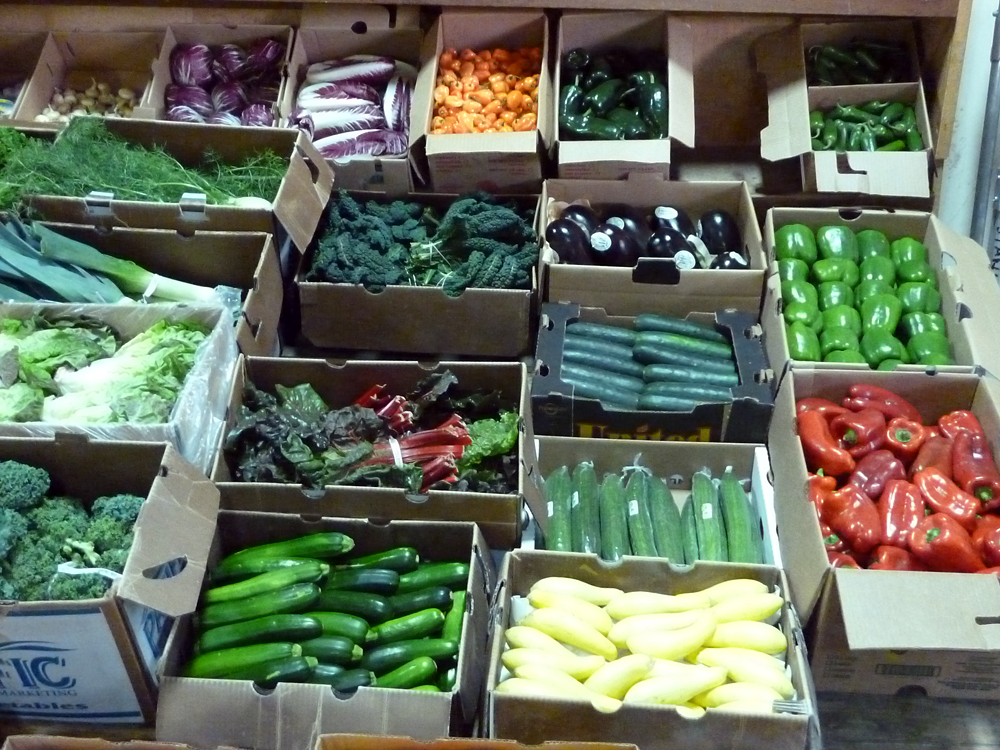
Skirt around an impromptu wall of limes in ten-pound boxes, then hustle past a levee of net sacks, fifty-pounders of red and yellow onions, hundredweights of potatoes destined for French-fry cutters from the Excelsior to the Richmond. At Cook’s Company and Greenleaf, the boxes are smaller, the products—edible flowers, exotic mushrooms—daintier. The clientele here are chefs, caterers, and artisans, who buy in smaller quantities and are notoriously picky about quality and consistency.
